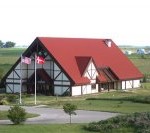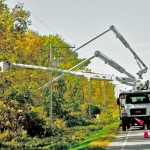Iowa Secretary of Agriculture Bill Northey today (Friday) announced that five watershed demonstration projects have been selected to receive $1.7 million in funding through the Iowa water quality initiative over the next three years. In addition to the state funds, the eight projects will provide an additional $2.2 million in matching funds to support water quality improvement efforts as well as other in-kind contributions. The five projects are within the large priority watersheds prioritized by the Iowa Water Resources Coordinating Council (WRCC), which include the East and West Nishnabotna, Floyd, and Skunk watersheds.
Locally, the Bluegrass & Crabapple – East Nishnabotna Watershed Project received a $325,000 grant for a $1.2-million dollar project, where the Audubon Soil and Water Conservation District (SWCD) will expand on existing partnerships and foster a peer-to-peer network to help promote and spread adoption of nutrient reduction practices in the Bluegrass and Crabapple watersheds. An advisory group made up of partners and farmers has helped develop this project and help shape watershed-wide demonstrations.
And, the Walnut Creek Watershed Project – Subwatershed of the Nishnatbotna River Water Quality Initiative (WQI), received a $480,000 grant toward the $1.082-million project cost, to build a network of producers, local agribusiness representatives, and agencies to promote and demonstrate conservation practices detailed in the Nutrient Reduction Strategy. Thee partnerships – lead by the Montgomery County SWCD – will ensure the best information is used to help present a regional focus on management and implementation of these practices.
In all, the demonstration watersheds selected cover 345,449 acres. The projects will implement and demonstrate the effectiveness and adaptability of a host of conservation practices including, but not limited to: cover crops, nutrient management, wetlands, terraces, bioreactors, buffer strips, no-till, strip-till, nitrogen inhibitors, extended rotations, conservation cover, drainage water management and manure management.
Another round of funding for new watershed demonstration projects may be available later this year depending on funding availability.











